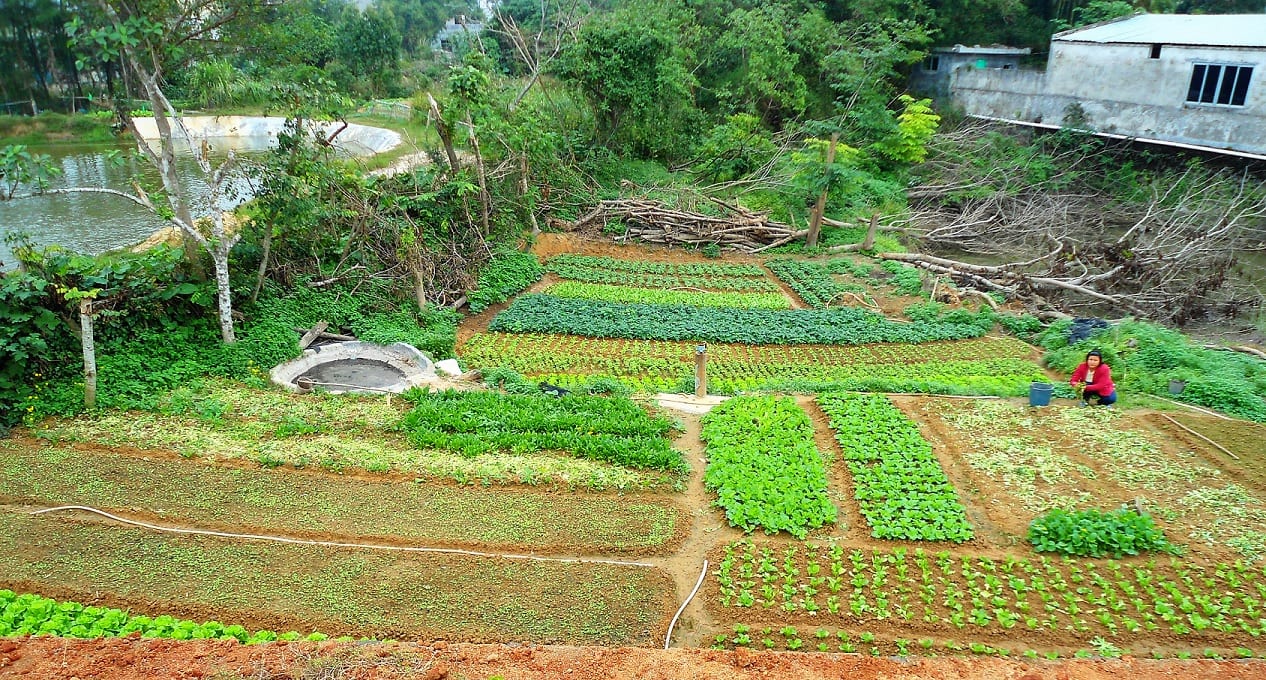The future of farming is small and diverse. Land reform is needed, but how do we get there from here, and do it fairly?
Last Monday’s post on the future of food closed with the idea that decentralization is key for a sustainable food future. Outside of the United States, this assertion isn’t terribly controversial; small farms and family-run smallholdings produce over 70% of the world’s food. Here, though, ever since Earl Butz, Nixon’s Secretary of Agriculture, ordered farmers to “go big or get out,” ag policy has been driven by economies of scale and “efficiency” (as defined by replacing human labor with fossil fueled machinery and diversity with monocrops). This system served us well (if you don’t count all the costs) for decades, but that doesn’t mean it will do so forever. It would take massive land reform to reshape the system, a frightening prospect for people who distrust change. So how can we move towards a system that’s better suited for a changing future?

The first step is to understand that land reform is even needed to begin with. Unlike leftist political movements around the world, American liberals, who claim to champion the oppressed, poor, and working classes, nevertheless seem disinterested in fighting for land reform. One possible reason is that largely (sub)urban liberals haven’t been deeply connected with the soil for generations. Working the land to support one’s eating habit may seem primitive to people with a Starbucks on every corner. Another, unfortunately, is that white nationalists have already started to take the initiative for reform, albeit mixed irredeemably with racist and misogynist values. The usual practice in American politics is for one side to take a position, and the other side to reflexively take the opposite view, no matter how worthy the issue, with no grey area for those who favor ecological changes but not “blood and soil” nationalism.
Still, there are leftists in the U.S. who haven’t forgotten that land is the basis of wealth, and that land reform, with or without the aid and consent of government, is critical for serving those left behind by the capitalist system. Consider New London, Connecticut, where Pfizer came to town in 2001 to “bless” the community with jobs and economic growth in exchange for a decade-long 80% tax abatement and cheap land that the city seized from residents via eminent domain. Not everyone was keen on giving up their homes, though, and their case, Kelo v. New London, went to the Supreme Court, which ruled in 2005 that the Constitution permits the use of eminent domain for the purposes of private economic development if a public benefit is promised. Holdout residents were summarily displaced and their land given to Pfizer which did nothing with it whatsoever.
A decade later, Pfizer’s tax break ended and the company abandoned the undeveloped property. A leftist group, the New London Mutual Aid Collective, started casually planting food there. Recently, inspired by other public food forests, the group began planting fruit trees on the seized land, an orchard from which anyone may eat. However, soon after the public became aware of the orchard, the collective reported that the same development authority that used the power of government to take the land from its previous owners and then let it rot planned to cut down the fruit trees. Perish the thought that the community should be able to make something good come from this debacle.
Which brings us to Thomas Jefferson. In 1785, Jefferson visited France and happened upon an impoverished woman, and the conversation he had with her prompted him to pen a rant to his friend back home. “Whenever there are in any country uncultivated lands and unemployed poor,” he wrote, “it is clear that the laws of property have been so far extended as to violate natural right. The earth is given as a common stock for man to labor and live on. If for the encouragement of industry we allow it to be appropriated, we must take care that other employment be provided to those excluded from the appropriation. If we do not, the fundamental right to labor the earth returns to the unemployed.” It sounds like Jefferson would have approved of such land reform as many modern Republicans would consider downright unAmerican.
According to the 2017 Census of Agriculture, the average age of American farmers is 57.5, and the trend is towards aging farmers and land consolidation. Running giant farms requires a lot of capital, and when these farmers retire or pass away, they may not have heirs who are interested in continuing the business. Meanwhile, we have a generation of cash-poor Millennials, some of whom are interested in putting ecological farming practices to work, but if they can’t even afford a home, they’re unlikely to be able to plunk down a payment for a thousand-acre farm. One would think that there ought to be a way to work this out, through land reform that takes care of elder farmers while putting land in the hands of bright and motivated young people who understand that the future of farming is small and diverse.
Our future depends upon land reform. Let’s be the kind of citizens that would make Thomas Jefferson proud (only without the slavery baggage this time).
Related: Tomorrow’s Dinner: The Future of Food


Join the conversation!